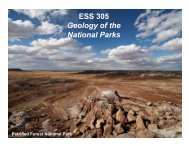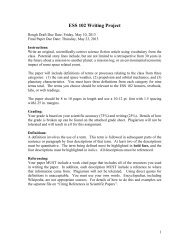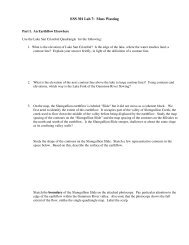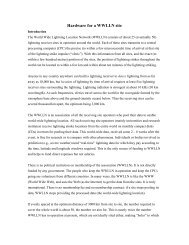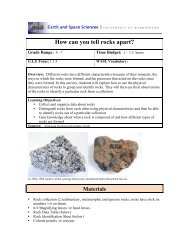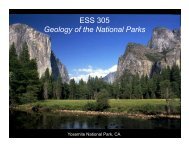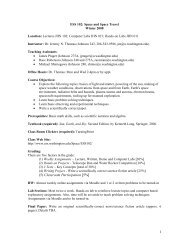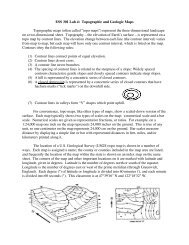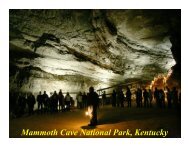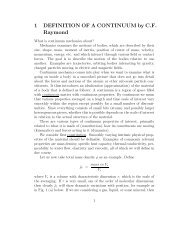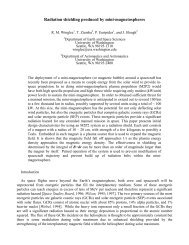Common Rock-Forming Minerals - Earth and Space Sciences
Common Rock-Forming Minerals - Earth and Space Sciences
Common Rock-Forming Minerals - Earth and Space Sciences
Create successful ePaper yourself
Turn your PDF publications into a flip-book with our unique Google optimized e-Paper software.
Examples of how a mineral surface reflects light for minerals with (A) good cleavage, (B) poor cleavage, <strong>and</strong><br />
(C) fracture.<br />
Cleavage surfaces may be confused with crystal growth faces; in fact cleavage planes are sometimes parallel to<br />
growth faces. They can be distinguished as follows. (1) Growth faces are normally smooth, whereas cleavage<br />
planes, though also smooth, commonly are broken in a step-like fashion. (2) Some growth faces have fine<br />
grooves or ridges on their surfaces, whereas cleavage planes generally do not. (Plagioclase is an exception — it<br />
has striations on its cleavage planes.) (3) Finally, unless growth faces happen to coincide with cleavage planes,<br />
the mineral will not break parallel to growth faces.<br />
5. Determine whether the flat faces on the following minerals are crystal growth faces or are due to cleavage.<br />
Specimen #<br />
Cleavage/Crystal Face<br />
8<br />
9<br />
6. How many cleavage planes are there in the following minerals If there is more than one cleavage<br />
direction, what is the angle between cleavage planes (“NA”, “90°”, or “Not at 90°”)<br />
Specimen # # Planes Angle Between<br />
Cleavage Planes<br />
10<br />
11<br />
12<br />
13



